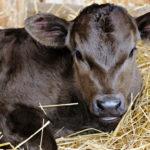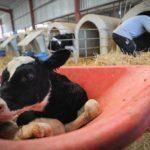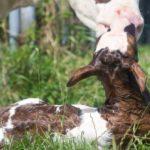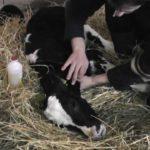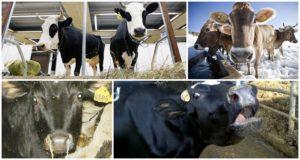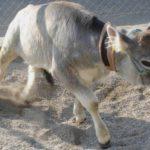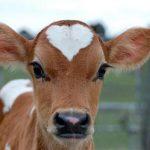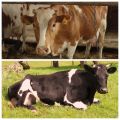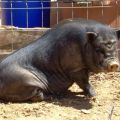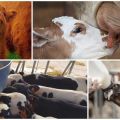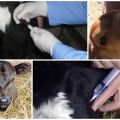What to do if the calf is unable to stand, causes and treatment
After the cow has calved, the newborn baby should rise on its own in 15 minutes. Such attempts are not always successful. Many novice farmers are often worried about the question of what to do if the calf does not immediately rise to its feet. In an older age, the situation may repeat itself. It is important to understand in time the causes of the problem and how to solve it.
Causes and predisposing factors
Identifying the reasons why the animal lies still can help prescribe treatment. The pathology is evidenced by the situation when the calf cannot get to its feet for an hour. According to statistics, approximately 7 out of 100 such cases are fatal.
Unbalanced nutrition and poor care
An unbalanced diet for a pregnant cow affects the development of the calf while still in the womb. The animal requires special attention 3 months before delivery.
The following leads to unpleasant consequences when feeding:
- Cold or sour milk.
- Large opening at the nipple.
- Sudden change in diet.
- Using colostrum from an animal with mastitis.
- Excessive feeding.
Walking during bad weather and poor living conditions adversely affect the condition of the calves.
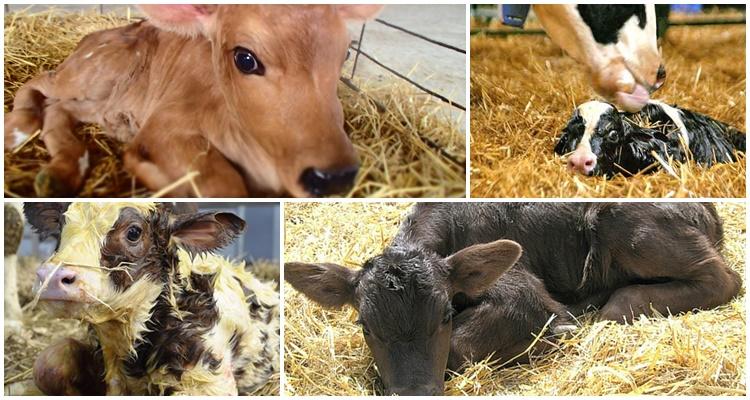
White muscle disease
For normal development, the diet of animals is enriched with useful additives. An insufficient amount of certain substances in the body is dangerous to health. Vitamin E deficiency, methionine and selenium deficiencies lead to white muscle disease.
The following manifestations should be alerted:
- The calf breathes with difficulty, gets tired quickly.
- The animal stops eating.
- Loose stools appear.
If the calf has fallen on its side and does not rise, it is best to call a doctor. Based on the analysis of urine, the veterinarian will determine the dosage of medications and the duration of the course of treatment. Injections of vitamin E and sodium selenite are commonly prescribed.
Tetany
Diseases of the nervous system often lead to the calf not getting up. A characteristic symptom of tetany is that after falling, the animal begins to jerk its legs. Other signs:
- Loss of activity.
- Profuse salivation.
- Convulsions begin.
- The joints swell.
- The displacement of the eyeballs indicates an advanced stage of the disease.
To relieve pain, sedatives and dietary adjustments are prescribed. Calves are fed with mineral supplements.
Rickets
Falls of calves are also associated with rickets. The disease provokes a low content of vitamin D, phosphorus and calcium in the body. Pathology occurs at different ages. Unbalanced nutrition of pregnant cows contributes to the birth of sick offspring.
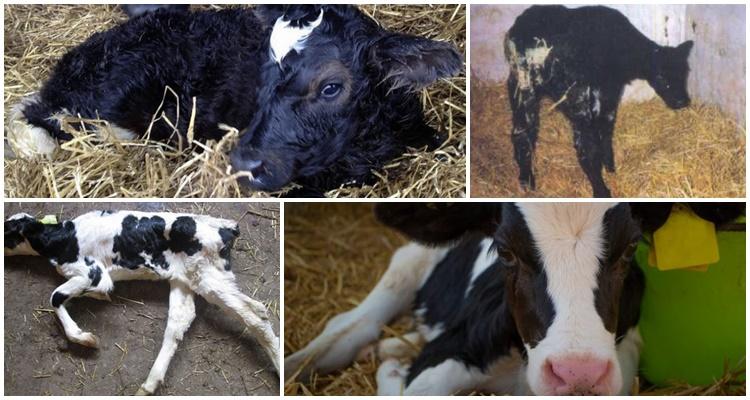
An accurate diagnosis is made only by a veterinarian after appropriate tests. The grounds for inviting a doctor are:
- Deformation of the forelimbs and the shape of the animal's skull.
- Induction of chest ribs.
- Increased joints.
- Painful response to palpation of the lower back or pelvic bones.
- Pica. The calf drinks slurry, gnaws at walls, wool or earth.
Adding ash, chalk or bone meal to food, a course of vitamins and minerals will ease the condition of the animal. In some cases, ultraviolet radiation sessions are also prescribed.
Alimentary dystrophy
Inappropriate nutrition and fasting often cause the calf to stop standing up. This condition is typical for alimentary dystrophy. With this disease in animals:
- One fifth of the original weight is lost.
- Muscle wasting occurs.
- Hair falls out, and the skin sags.
- The rhythm of the heartbeat slows down, breathing weakens.
In order for the calf to begin to stand up, it is necessary to improve the functioning of the digestive tract and add more nutrients to the animal's diet.
Clinical signs
Sometimes after birth, the bull cannot rise to its feet for about 8 hours. The sucking reflex in such cubs is weak. Skin folds do not straighten for a long time, there is almost no fat layer. In sick animals:
- The pulse is difficult to determine.
- Breathing is shallow.
- Pale mucous membranes.
- Decreased body temperature.
- External stimuli cause almost no reaction.
Animals with signs of hypoxia cannot rise and lie down. Body weight sometimes even exceeds the norm. But these calves have disturbed heart rate and breathing. The head often swells, the skin and mucous membranes acquire a bluish tint. There is a lot of mucus in the mouth and nasal passages.
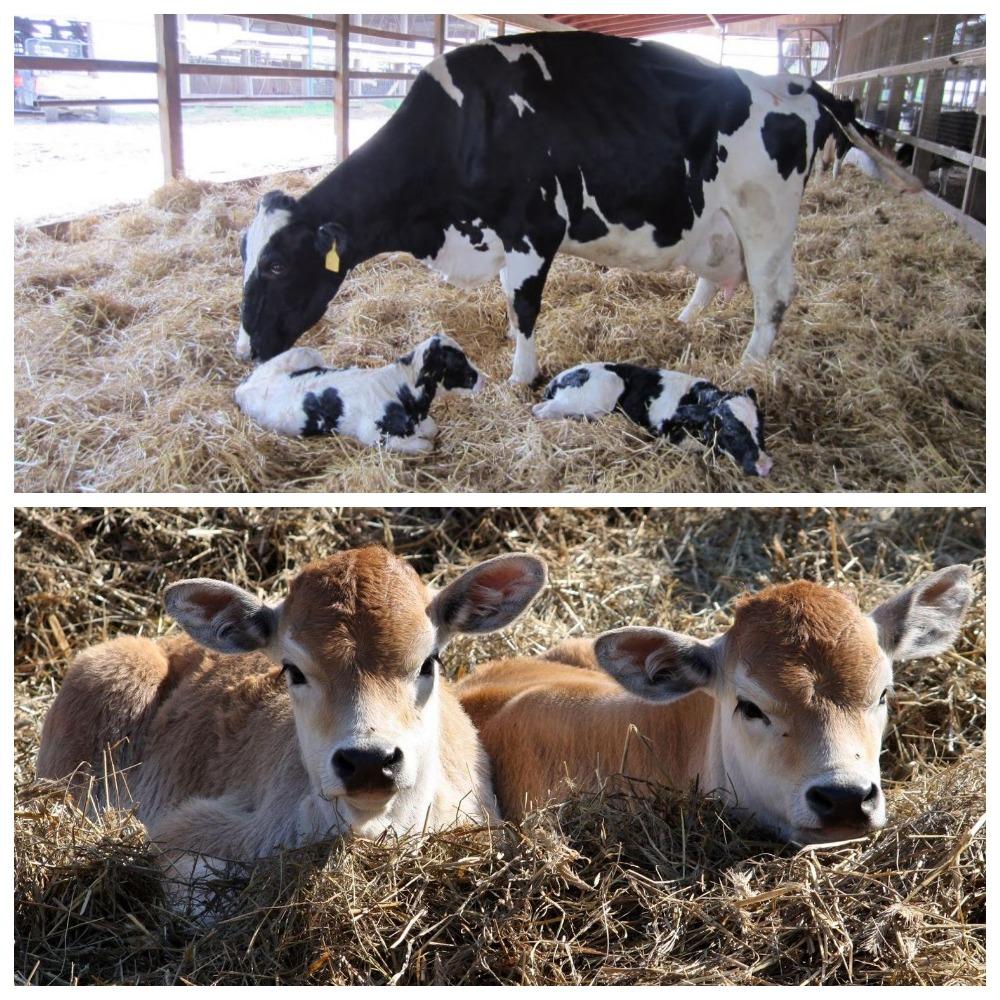
Help in the first minutes
Hypoxia during birth is observed in almost all calves. Some are less susceptible to the phenomenon and can breathe air into the lungs on their own, others need help.
After the birth of an animal, it is necessary:
- Lift the calf up. The upright position makes it easier to clear mucus from the airways.
- The ribcage is rubbed with a bundle of straw until it is completely dry.
- Tongue massage is an effective measure.
- Cool water, which is poured over the back of the head, activates the blood circulation process.
- The Respirot emulsion is injected into the mouth or nose.
Primary interventions are usually beneficial. The calf begins to breathe and gets to its feet. For serious problems, call a veterinarian. Attempts to resuscitate the animal continue until a specialist arrives.

Treatment methods for the problem
In emergencies, artificial respiration or chest compressions are used, adrenaline or atropine is administered. Further treatments:
- Youngsters are transferred to a warm room. Infrared lamps are used for heating.
- Provide the introduction of vitamin complexes using injections or inhalation.
- Use stimulants.
- Glucose is administered.
- Sometimes Hydrolysin injections are prescribed.
Farmers are also worried about the question of why a grown calf, which is 1-2 months old, does not get up on its feet. Reasons for limb failure:
| Symptoms | Diseases | Treatment methods |
| The animal drags its hind limbs while moving | Limb injuries: scratches, bruises, sprains | Apply a bandage, use compresses, ointments, antiseptics. |
| The calf does not stand up and lies | ||
| Low muscle tone | Central nervous system pathologies: spinal cord injuries, malignant neoplasms, hemorrhage or overheating of the animal | Diagnosis and treatment is carried out only by a veterinarian after a thorough examination.
|
| Weak reaction to light from the eye pupils | ||
| The goby looks lethargic and sleepy | ||
| The calf lies motionless |
For any symptoms, it is important to consult a doctor in order to rule out a misdiagnosis and agree on treatment methods.
Preventive actions
Preventive measures will help keep the young stock healthy. Both newborns and older calves are provided with normal conditions for keeping:
- The barn is regularly ventilated.
- They monitor the freshness of feed and a balanced diet of animals.
- Eliminate obstructions that can cause a calf to fall.
- They try to exclude the occurrence of stressful situations.
- Veterinary examinations are carried out.
Taking care of the health of the herd can prevent serious problems from occurring and the calves will get back on their feet immediately after birth. An attentive owner, who creates all the conditions for the normal development of animals, ensures the prosperity of the farm.
